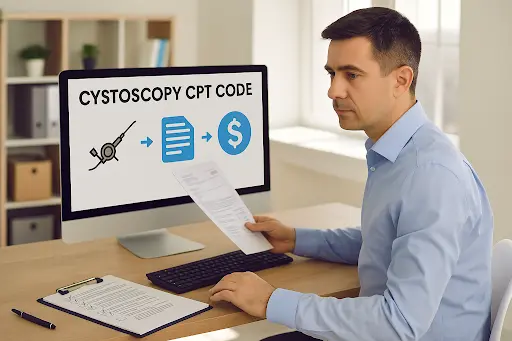At Cadence Collaborative, staying ahead of industry changes isn’t optional—it’s essential.
Medical billing is a fast-moving world, and modifier updates can directly impact how services are reimbursed, bundled, or denied.
For 2025, CMS and AMA have introduced several new CPT and HCPCS modifiers, along with changes to existing ones.
If you’re not applying them correctly, you could be risking revenue and compliance in equal measure.
In this guide, we’ll break down what’s new, what’s changed, and how your practice—especially in specialties like plastic surgery, behavioral health, and RCM-heavy environments—can adapt seamlessly.
Let’s decode the 2025 modifier updates together.
What Are Modifiers?
Modifiers are two-character codes (numeric or alphanumeric) that you append to CPT®, HCPCS, or Level II codes.
They help payers understand the context of a procedure—when it was done, why it was done, or how it differed from the standard.
They can signal things like:
- Multiple procedures performed together
- Increased complexity
- Repeat procedures
- Site-specific distinctions
- Post-op adjustments
- Non-covered services (for patient awareness)
Using modifiers correctly means fewer denials, faster payments, and bulletproof compliance.
What’s New in 2025?
The 2025 updates from CMS bring critical changes to how surgical care is billed across the global period.
While Modifier -54 (Surgical Care Only) was expanded to include all 90-day global packages, what’s really grabbing attention this year is the renewed emphasis on using Modifiers -55 and -56 correctly—and separately.
These updates reflect CMS’s continued push for greater accuracy and transparency in how postoperative and preoperative care are reported.
Modifier -55 — Postoperative Management Only
What changed in 2025:
CMS is reinforcing the correct, standalone use of Modifier -55 for situations where a non-operating provider assumes full or partial responsibility for postoperative care.
This is especially important in:
- Rural or multi-site practices
- Cross-referral care arrangements
- Group practices with rotating coverage
What to do:
If the operating surgeon uses -54, the provider handling post-op must use -55—not just a regular E/M code.
📌 Example:
Surgeon A bills 15847-54 (abdominoplasty)
Surgeon B bills 99024-55 or appropriate E/M + -55 for post-op visits
New in 2025: CMS is auditing split post-op billing more closely, requiring proper documentation of transfer, including:
- Date of handoff
- Identity of assuming provider
- Scope of post-op care assumed
Modifier -56 — Preoperative Management Only
What changed in 2025:
Previously underused, Modifier -56 is now being promoted for shared-care scenarios, especially when surgeons outsource pre-op assessments (e.g., cardiology clearance, anesthesia evaluations).
When to use it:
When you perform the preoperative evaluation only, and not the surgery or post-op care.
Example:
Internist does risk assessment & clearance → bills with Modifier -56
Surgeon performs procedure → bills with Modifier -54
Another provider handles post-op → bills with Modifier -55
CMS expects improved usage of Modifier -56 to better track coordinated surgical care, particularly in large hospital systems and ACOs (Accountable Care Organizations).
Expanded Use of Modifier -54 & New Code G0559 (2025)

One of the most impactful updates for surgical specialties in 2025 is the expanded application of Modifier -54 and the introduction of G0559 as a companion code for postoperative care billed separately.
At Cadence Collaborative, we’ve worked closely with plastic surgery groups that regularly share postoperative care with other providers, especially in multi-specialty or rural care settings. These changes offer new billing clarity and revenue opportunities when care is split.
Modifier -54 — Surgical Care Only (Expanded in 2025)
What’s new:
CMS has broadened the policy for Modifier -54 to apply to all 90-day global surgical procedures, even when the transfer of postoperative care is informal or undocumented.
Purpose:
Use Modifier -54 when the operating surgeon does not intend to provide post-op care, regardless of whether a formal written transfer exists.
How it works:
- Append -54 to your global surgical code (e.g., 19318-54 for breast reduction)
- You’ll be reimbursed only for the intraoperative portion (~70–80% of the total fee)
- Post-op care can be billed separately by another provider using G0559
G0559 — Postoperative Care Only
This new HCPCS add-on code is designed for non-operating physicians or groups who assume postoperative management from a different surgeon.
How it works:
- Reported for postoperative follow-up within a global surgical package
- Requires proper documentation of assumed care (EMR notes, attestation)
- Use when Modifier -54 was used by the surgeon
Example: A patient undergoes abdominoplasty by Surgeon A, but receives all follow-up care at their local practice with Surgeon B.
- Surgeon A bills 15847-54
- Surgeon B bills G0559 for post-op care
How to Prepare Your Team
At Cadence Collaborative, we recommend taking these steps now to avoid payment delays:
- Update your EMR/EHR templates to include new modifier logic
- Train providers on new modifier uses—especially -F1 and -SC
- Audit shared visit workflows for modifier -SC risk
- Document complexity clearly when using -XW or -22
- Monitor early denials and appeal patterns related to modifier use
Final Thoughts
Medical coding modifiers aren’t just bureaucratic extras—they’re the language payers rely on to understand your claims.
And when the language changes, your systems, staff, and workflows must evolve too.
If your practice or RCM team needs help interpreting, training, or applying the 2025 modifier updates, Cadence Collaborative is here to help.
We turn compliance into clarity—and complexity into cash flow. Contact us today!






